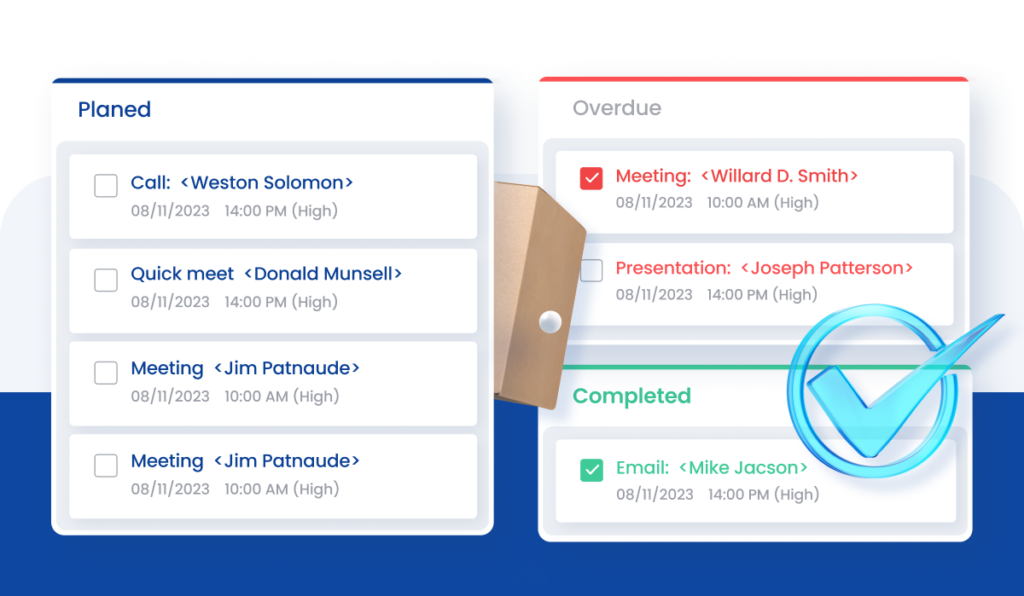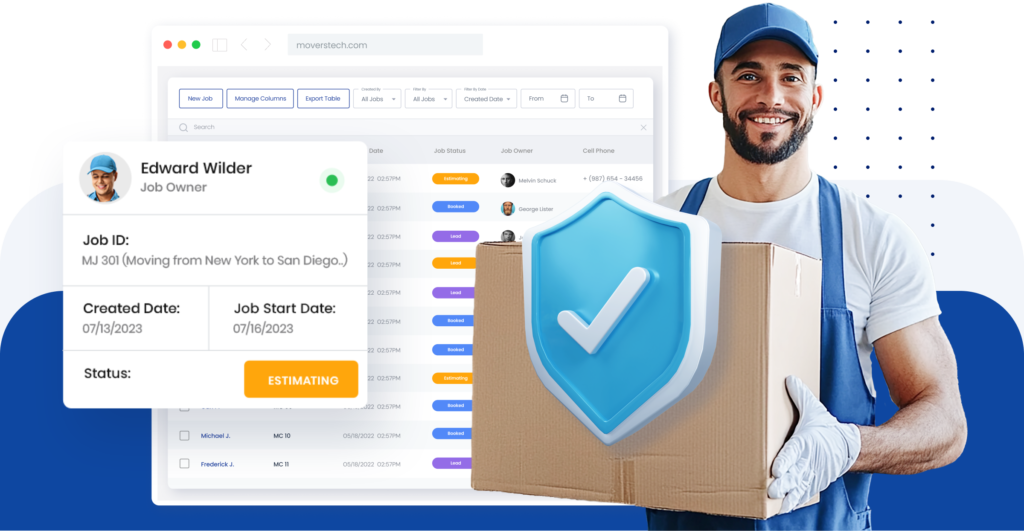The different types of data in your CRM and how to use them

Every successful move starts with good data. However, most movers don’t realize how much value is sitting in their CRM. So, what is CRM data, and how can you use it to run a more efficient moving business? Movers collect a wide range of information every day, from pickup addresses to customer feedback. Knowing how to organize and apply these types of customer data in our MoversTech CRM gives you an edge in planning, marketing, and service delivery. We will break down the different types of data in your CRM and show you exactly how to use CRM data to your advantage.
Four types of CRM data movers need
Not all data CRM gives you is equal. For movers, different types of data in your CRM support different parts of your operation, from dispatch to customer service. Understanding how to structure and apply each one helps you improve job planning, communication, and business growth. Here are the different types of data in your CRM:
- Move & contact details
- Move profile
- Job metrics
- Move feedback & claims
Move & contact details (identity data)
This type of CRM data helps you identify each customer and prepare for their move with precision. It includes:
- Customer name, phone number, and email
- Move dates: pickup and delivery
- Pickup and drop-off addresses
- Property details: number of floors, elevator access, parking restrictions
This CRM data type gives your team the information they need to plan routes, prepare paperwork, and stay on schedule. Unlike general mailing info, movers need location-specific and time-sensitive data to avoid delays and mistakes. Every successful move starts with this kind of CRM data structure.
Here’s a typical case: your CRM shows a move scheduled for May 20, going to a third-floor apartment with no elevator and only street parking available. With that kind of detail, your crew can prepare for stairs and extra time, avoiding delays.

Move profile (descriptive data)
Your CRM should also capture details that describe the move itself. This type of data in CRM gives you context that helps with quoting, scheduling, and resource planning. It includes:
- Move type: local, long-distance, interstate, commercial
- Size: studio apartment, 2-bedroom house, 600 cubic feet, etc.
- Special handling: pianos, fine art, antiques, fragile or oversized items
These types of customer data in CRM help you match the right crew, trucks, and equipment to each job. Without this info, it’s easy to underquote or misallocate resources.
Consider a long-distance move for a three-bedroom home that includes delicate antiques. If this is logged in your CRM, you can send a larger crew and the right packing materials without needing last-minute adjustments.
Job metrics (quantitative data)
This is the measurable CRM data that shows how your jobs perform over time. It helps with forecasting, staffing, and pricing strategies. Important job metrics include:
- Total jobs completed per customer
- Average move duration (in hours)
- Revenue per move
- Truck utilization rate (empty vs. full mileage)
These CRM data examples help you spot patterns like frequent small moves or underused trucks that you can turn into improvements. They also help you identify repeat customers, high-value jobs, or inefficiencies that cost money. In addition, these CRM job metrics support your pricing and planning—alongside other financial metrics you should track to keep your moving business profitable.
Take a customer who’s booked four jobs with your company. Your CRM data might show each move lasted about six hours and brought in $1,300 in revenue. That kind of pattern helps you plan future jobs and improve truck usage.

Move feedback & claims (qualitative data)
This is one of the types of data in CRM that captures how your customers feel about the service they received. It goes beyond numbers and helps you improve customer experience and reduce future problems. Useful CRM data examples include:
- Post-move ratings (timeliness, care of items, crew behavior)
- Written feedback (positive or negative)
- Open claims (damage, loss, service issues)
Unlike hard numbers, this example of CRM data types gives you insight into what customers really value and where your team may be falling short. It helps you align with customer service best practices. Organized well, this data in CRM supports quality control, training, and upsell opportunities.
Let’s say a customer leaves feedback saying, “Everything went well, but the team arrived half an hour late.” When this is recorded in your CRM, it flags a scheduling issue you can fix before it affects your reviews.

How to Use CRM data to optimize your moving business
Once you understand the types of CRM data you’re collecting, the next step is knowing how to apply it. Using the different types of data in your CRM the right way helps you run smarter operations, deliver better service, and increase repeat bookings. Here is how you can use CRM data in daily business:
- Use job history to drive repeat bookings
- Optimize dispatch & routing
- Re-engage past clients with personalized touches
Use job history to drive repeat bookings
Tracking job history is more than just record-keeping. This CRM data type helps you identify repeat customers and re-engage them with perfect timing. Start by segmenting your contacts based on how often they move. For example, corporate clients or renters may move more frequently than homeowners. This is why customer history matters. It helps you spot patterns and reach out at the right moment to win repeat business.
Use CRM data examples like past move dates and frequency to trigger automated email reminders. If someone moved in June last year, reach out in May with a personalized message: “Need help with your next move?” You can also tie in referral incentives to increase value. This is a smart way to turn job history into steady business.
Optimize dispatch & routing
Dispatch efficiency is a major factor in your daily profit margins. Your CRM data structure can help you optimize routes and job scheduling. Look at past job duration, truck usage, and service zip codes. Then, group similar locations and timeframes to reduce travel time and avoid empty return trips.
For example, if your CRM shows that jobs in a certain neighborhood typically take four hours and cluster around weekends, you can plan routes that group those jobs back-to-back. This helps you avoid fuel waste, lower payroll costs, and get more done in fewer hours. Understanding this type of data in CRM allows your dispatch manager to make better real-time decisions and fine-tune weekly route planning.
Re-engage past clients with personalized touches
Personalized communication builds loyalty. Use customer details stored in your CRM data—like move dates, birthdays, or service feedback—to reach out with purpose.
Let’s say it’s been one year since a customer’s last move. Your CRM can remind you to send a quick email: “Happy move-iversary! We’d love to help again—or maybe help a friend.” You could even attach a discount code for referrals or repeat services. This is a perfect time to integrate and use email marketing as part of your follow-up strategy.
This is an effective use of types of customer data in CRM, especially when combined with qualitative feedback. If a customer left a positive review, follow up with a thank-you message or special offer. These small steps help you stay top-of-mind and increase lifetime value.
Use CRM data and work smarter
Understanding the different types of data in your CRM gives you the power to run your moving business more efficiently. When you organize your CRM data, from move details to customer feedback, you can plan better, serve clients faster, and win more repeat jobs. Each CRM data type plays a role in how you quote, schedule, dispatch, and follow up. The real value comes from using that data to take action. If you’re ready to improve how you collect, store, and apply your data in CRM, MoversTech CRM gives you the tools to do it right—every step of the way.
Stay Informed
Subscribe for industry
news & updates
"*" indicates required fields

